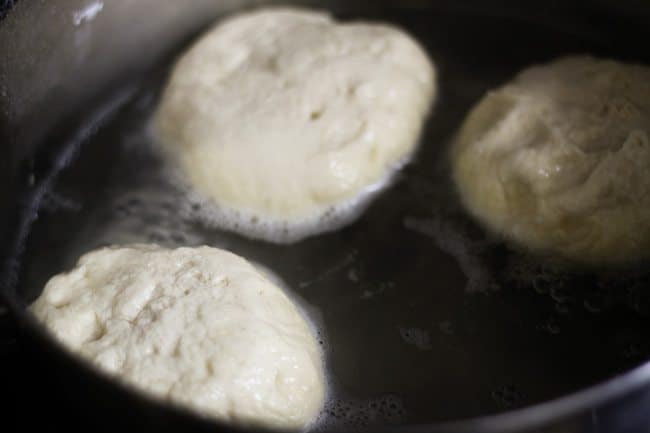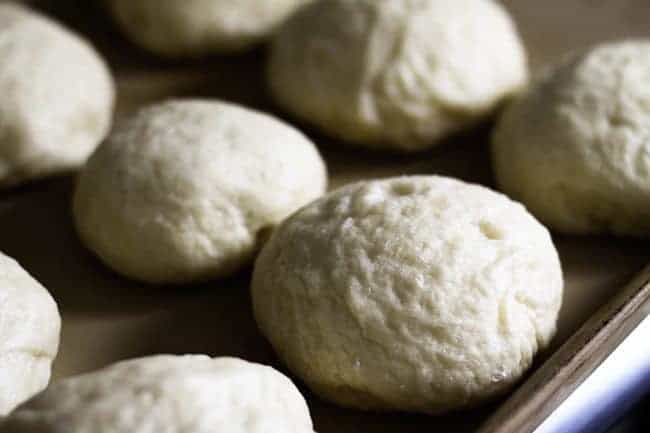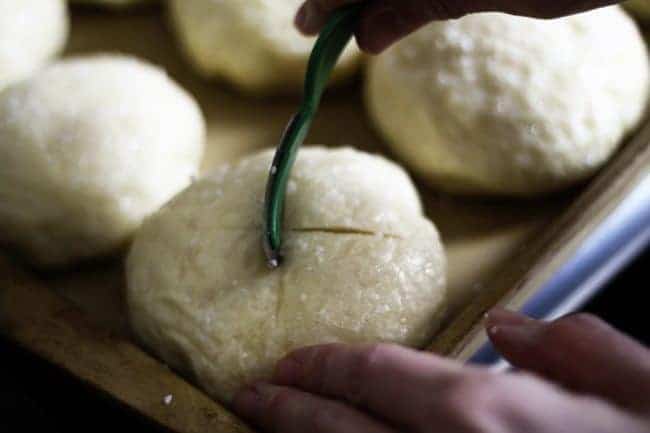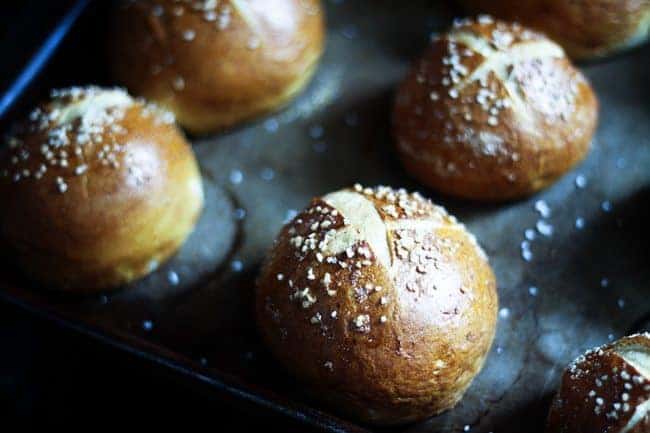ngredients
- 4 cups (1 pound 1 ounce, by weight) bread flour
- 1 tablespoon non-diastatic malt powder (preferably) or sugar
- 1¼ teaspoons kosher salt
- 1 cup whole milk
- ½ cup hot tap water
- 2 teaspoons SAF or instant yeast
- 2 quarts water
- 2 tablespoons baking soda
- 1 egg white, whisked until frothy
- Coarse sea salt, kosher salt or pretzel salt
Instructions
In a large mixing bowl, whisk together the flour, salt, malt powder or sugar and yeast. Set the whisk aside and switch to a sturdy wooden spoon. Stir in the milk and tap water until a soft dough forms. Turn onto a generously floured surface and knead, adding small amounts of flour as needed to keep the dough from adhering to the counter. You do not want a firm dough… it should be fairly slack, a little tacky and soft, yet smooth. Place dough in a clean bowl, cover with a damp tea towel and set aside to rise in a warm, draft-free place until nearly doubled in bulk and puffy, about an hour or so.
In the work-bowl of a stand mixer fitted with a dough hook, combine the flour, salt, malt powder or sugar and yeast. Mix on low just to combine dry ingredients. With mixer still on low, carefully pour in the milk and water. Continue mixing on low until you have a smooth, soft, slightly tacky dough. Remove bowl from the mixer, cover with a damp tea towel and set aside to rise in a warm, draft-free place until nearly doubled in bulk and puffy, about an hour or so.
To Make the Dough by Bread Machine:
Add the milk, water, flour, malt powder or sugar, and yeast to the pan of your bread machine in the order recommended by the manufacturer. Select the “Dough” or “Dough Only” cycle and hit start. Allow the cycle to complete.
Line a 11×13-inch baking sheet with a silicone or teflon pan liner. Alternatively, use an unglazed stoneware pan. Set next to your work area.
Turn the dough out onto a very lightly floured surface. Use a bench knife to cut the dough into four pieces. Cut each of those quarters into 3 pieces. Working with one piece at a time, form the dough into a ball, then cup your hand around the outside of the ball and roll clockwise until the top of the roll is perfectly smooth and the dough is tensely stretched over the top.
Transfer the dough balls onto the lined baking sheet, three to a row. They will expand both as they rise and again as they boil and bake. When you have dealt with all the dough, cover the pan with a tea towel and let rise in a warm, draft-free place until puffy looking, about 20 minutes.
Preheat oven to 400°F. Bring 2 quarts of water to a boil in a stainless steel or other non-reactive pan (enameled cast-iron, tempered glass, etc…) When water boils, add the baking soda. Gently lift the pretzel rolls one at a time into the boiling water. (You can boil more than one at a time, but be sure not to crowd the the pan as they will expand as they boil. Let simmer for about 45 seconds, flip the pieces and simmer for another 45 seconds-1 minute.

Use a slotted spoon to drain and return each piece to its place on the pan. Continue until all rolls have been boiled and returned to the pan. They will look a little puckery and shriveled. Do not fear! This will all work out!

Brush all of the rolls with the frothy egg white and sprinkle with coarse salt. Use a sharp knife or lame to cut an x 1/8- to 1/4-inch deep.

Place pans in oven and bake at least until golden brown, about 25 minutes, but you can bake until they are deep brown as I prefer them, closer to 35 mintues. It’s up to you!
Remove the pans from the oven and transfer the rolls to a cooling rack. Cool completely before slicing and serving.

Notes
You can cut the dough into 24 equal sized pieces for slider sized rolls, if you prefer.